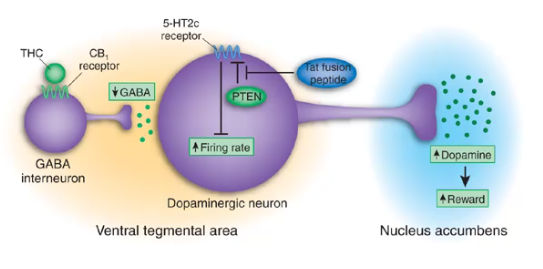Neuropharmacology
Contents
Neuropharmacology
Neuropharmacology - the study of how drugs affect cellular function in the nervous system, and the neural mechanisms through which they influence behaviour.
The Neuron
Rene Descartes - expansion of fluids within the brain and spine were transduced into muscle movements
Luigi Galvani - animal electricity - induction of muscle movements from sensory information to muscular activity
Camillo Golgi - Discovered a way of visualising brain cells by fixing black silver chromate particles
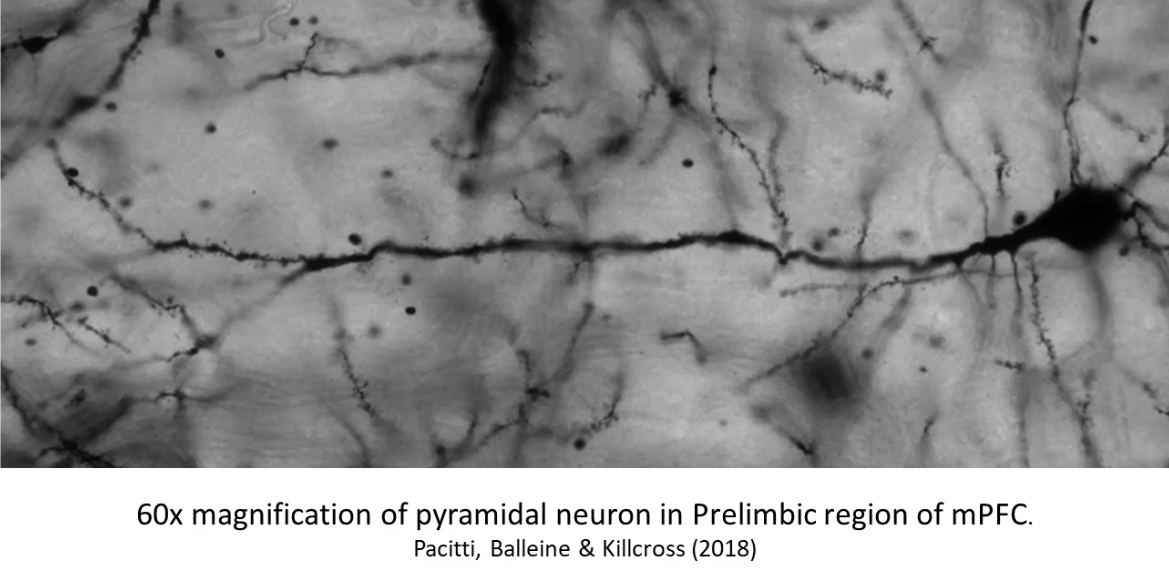
Types of Cells
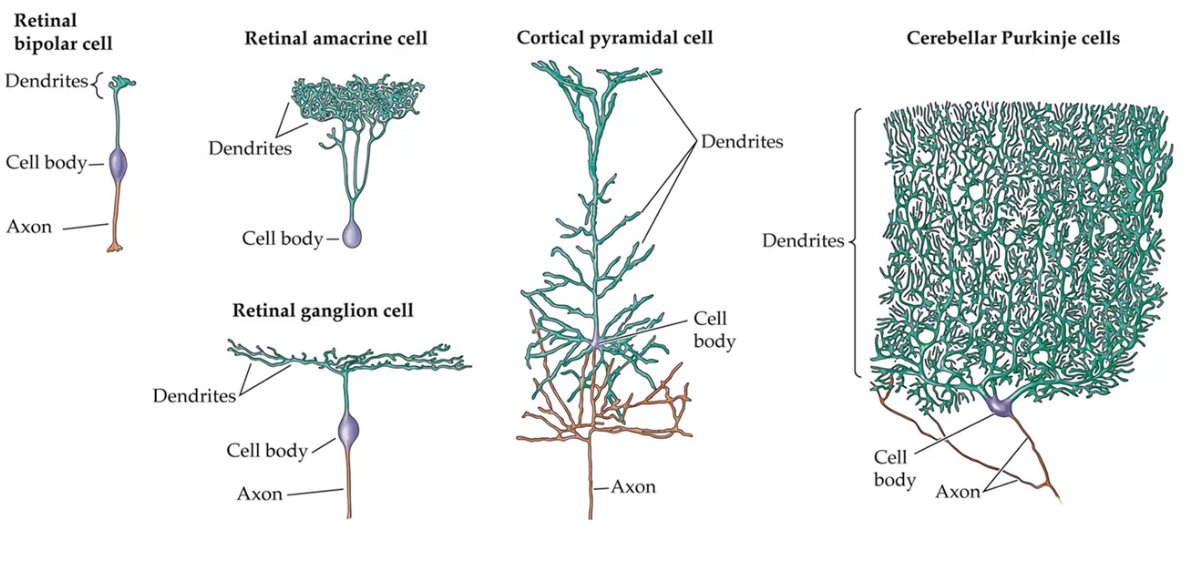
- Dendrites - branch-like structures that receive information/signals from other neurons
- Cell body (soma) - control region which contains the machinery that keeps the neuron alive and functioning
- Axon hillock - region which inputs excitatory and inhibitory input are used to determine whether the cell will 'fire' (action potential) or not
- Axon - thin fibre extending from the soma which is involved in transmitting electrical signals to other neurons
- Myelin sheath - fatty layer that covers portions of the axon, speeds up electrical conduction
- Nodes of Ranvier - allows the electrical charge to jump to each node, speeding conduction
- Terminal buttons - passes the electrical signal to the dendrite of a neighbouring cell (via neutrotransmiter release)
Neuron Potentials
Action potential - the process by which an electrical signal is transmitted along an axon
Resting membrane potential
Voltage of a neuron when it is not firing
Potassium ions (K+) in the cell, and charged Sodium ions (Na+) outside
-70 mV
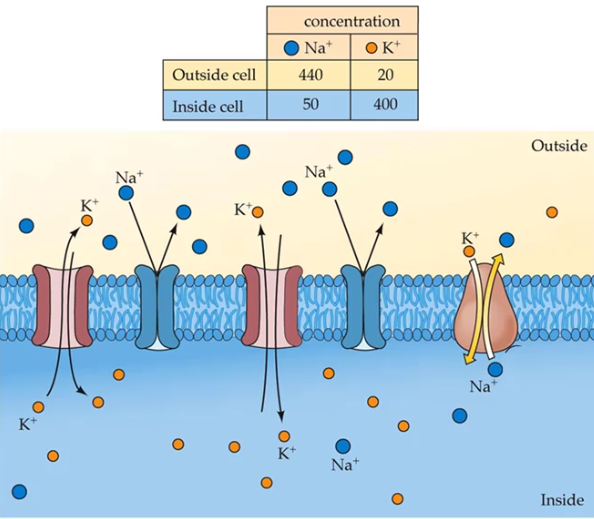
Action Potential
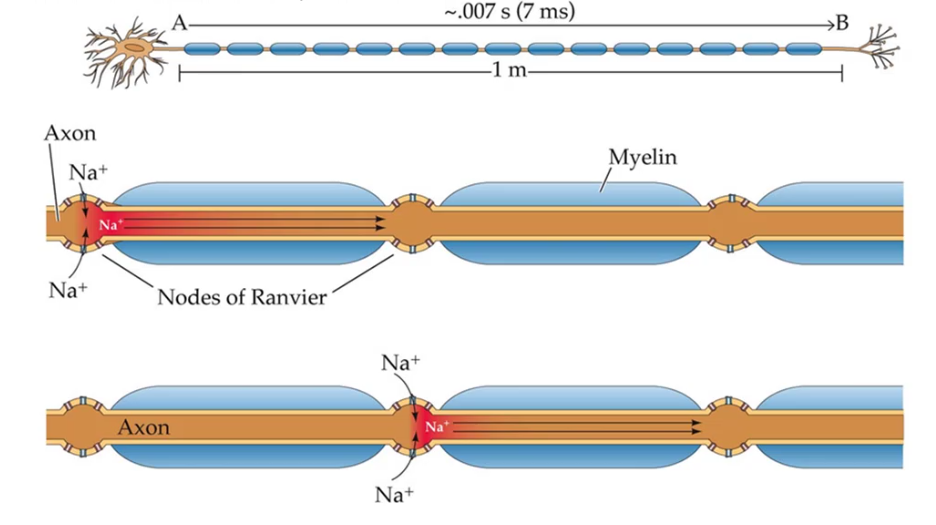
Neurotransmission
The process in which an action potential continues along the neighbouring cell
- Neurotransmitters - chemical messengers that are released by one neuron (pre-synaptic) and that alters the electrical activity on another neuron (post-synaptic)
Synaptic cleft - a gap/space between the terminal button and the dendrite (spine) of the neighbouring cell.
When an action potential reaches an axon terminal, it stimulates the release of neurotransmitter molecules from sacs (vesicles). These molecules cross the synaptic cleft and bind to receptor sites on the receiving neuron.
The sending neuron then re-absorbs excess neurotransmitter molecules - a process known as reuptake
Excitatory Neurotransmitters
Opens up sodium channels - which allow sodium ions to be absorbed
This creates a positive internal charge - Excitatory Post-Synaptic Potential (EPSP)
Inhibitory Neurotransmitters
Open up potassium channels - which release potassium ions.
This creates a negative internal charge - Inhibitory Post-Synaptic Potential (IPSP)
Drug Effect
Drugs act by modifying these processes to change cell firing rate
Drugs act on a primary neurotransmitter receptor, which then trigger other neural communications.

Agonist and Antagonist
Drugs will only fire a receptor if their shape matches.
- Agonistic - Perfect fit - cause the linked channel to open or close
- Antagonistic - Imperfect fit - block the action of the neurotransmitter
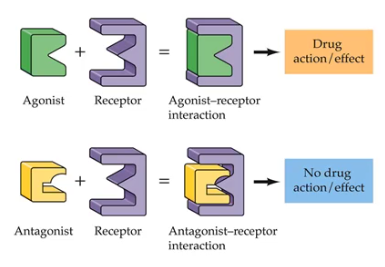
Dose Response Curve
Response of drug by dosage
- At low dosages, there is little response
- As the dose increases so does the response, until an upper limit is reached
- ED50 - Effective dose - at which 50% response is achieved
excitotoxic - If neurons are fired too much, they can be damaged
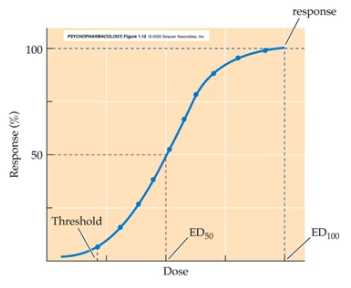
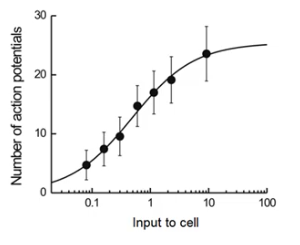
Dopamine and the Mesolimbic Pathway
Pathway inside the striatum from the Ventral Tegmental Area (VTA) to the nucleus accumbens
This pathway is key to the drug reward learning system, and is the common path where drugs produce their rewarding effects..
Olds and Milner (1954) - found early evidence for the role of dopamine in reward - where rats favourited a location in a box which contained a lever that would stimulate their medial forebrain
Dopamine Agonists
i.e. Cocaine, Amphetamine both increase dopamine
- Cocaine blocks dopamine reuptake - causing more dopamine to be taken up
- Amphetamine - causes more dopamine to be released from the vesicles
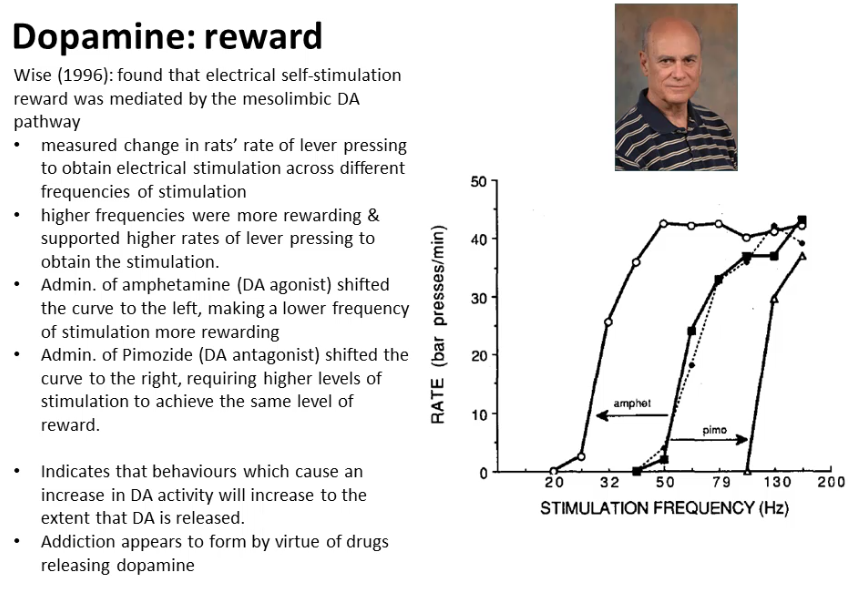
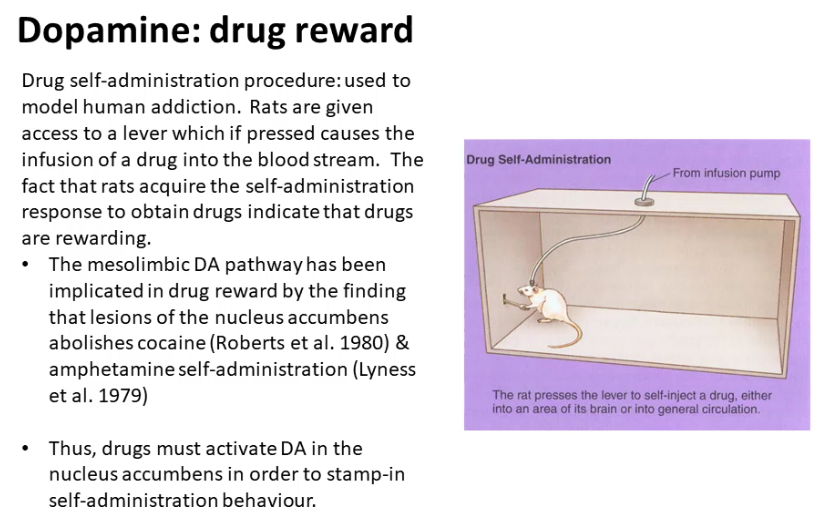
Seratonin
Also known as 5-HT - seratonin neurons are located in the raphe nuclei of the brain.
These axons project extensively across the brain, indicative of the importance of seratonin having an important role in brain function.
The 5-HT neurons play an important role in maintaining the conscious arousal level (wakefulness) - and are inhibited during sleep.

Roles
- Produces excitatory and inhibitory transmission of action potentials
- Excites neighbouring neurons (through diffusion into extracellular fluid)
- Influences learning and memory
Effect on Mood
Mainstream antidepressants influence the 5-HT neurotransmission to increase the availability of 5-HT in the synaptic cleft
Effect from MDMA
MDMA is a seratonin that blocks 5-HT reuptake - causing increased absorption.
MDMA also releases dopamine, which may increase their addictive potential.
However it is not as addictive as other drugs
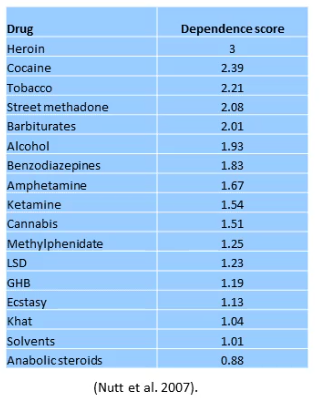
Endorphins (Opioids)
Open and close potassium channels - increasing/reducing the likelihood of action potentials carrying pain signals.
Endorphins inhibit the inhibitory neurons which increases the release of dopamine.
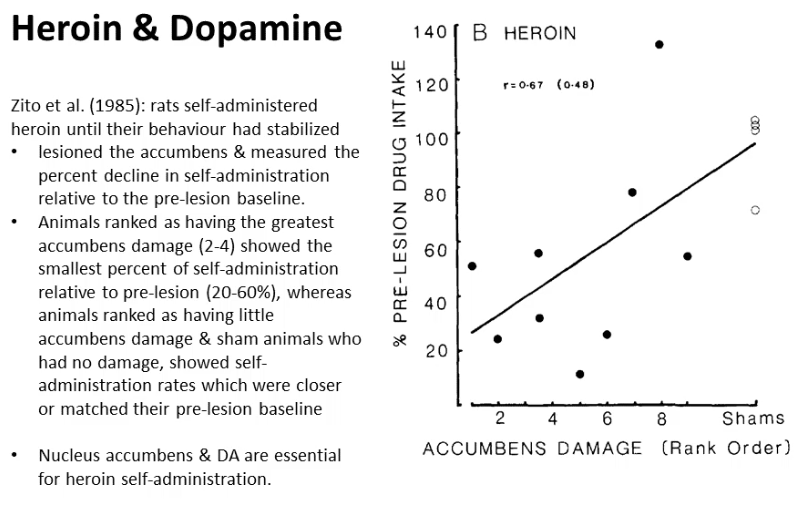
Pain and Pleasure
Hedonic reactions procedure - an animal model of subjective emotional experience, and the facial reaction was recorded with a camera

Under the influence of drugs, things that are unpleasant become less unpleasant; and things that are pleasant become more pleasant
Acetylcholine (ACH)
Has a role in cognition: sensitivity to sensory events, memory, response speed, etc
Alzheimer's disease is marked by impairments in cognitive capacity and characterised by the destruction of acetylcholine cell bodies (Auld et al. 2002)
These cell project broadly across the cortex and are believed to have a broad impact on brain functionality
Cells have a background firing rate, whose rate increases in response to appropriate stimulation - a process called tuning. ACH increases the signal-to-noise ratio of the firing rate response to certain stimulation.
Sillito & Kemp (1983) - ACH applied enhances the cell activity.
Nicotine
Nicotine binds to the ACH receptors on the post-synaptic cells which open and excite the cell, increasing the probability of an action potential
- Increase cognitive function by activating the ACH system
- Increases pleasure by activating the endorphin system
- Increases the reward of self-administration behaviour by activating the dopamine system
Foulds (1996) - Whilst nicotine does improve target detection, nicotine users have an overall slow reaction time (indicates long term damage)
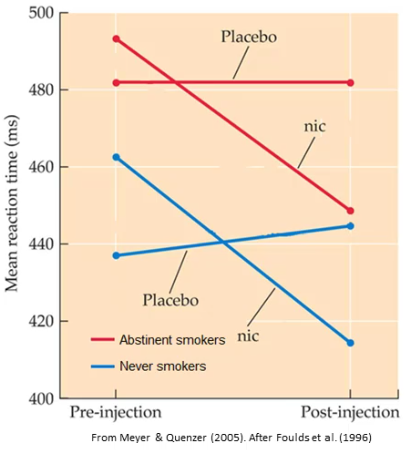
GABA
Gamma-amino Butyric Acid
The main inhibitory neurotransmitter, that shifts ion channels which cause the cells to negatively charge (hyperpolarise).
Use in mitigating epilepsy
Epilepsy is associated with seizures caused from an abnormal level of action potentials. Anticonvulsant drugs aim to increase the inhibition of brain cells in three ways
- Increase GABA availability
- Block sodium channels
- Antagonise the actions of the main excitatory neurotransmitter glutamate
Glutamate
Present in over 50% of the central nervous system tissue.
Learning
AMPA / Kainate Receptors - Respond to glutamate release by opening up sodium channels - initiates an action potential within the receiving cell
NMDA Receptors - Repond to glutamate release by opening up calcium channels which activate an intracellular process "second messenger system" - which increases the number of AMPA receptors, and increases the strength of the synaptic connection (long-term potentiation)
Effect of Alcohol
Reduces the overall level of excitation within the brain
- GABA agonist - further reduces excitation levels, causes sedative effects: anxiety reduction, motor incoordination
- Releases endorphins - euphoria and analgesic effect
- Dopamine agonist
Cannabinoids
Anandamide - the neutrotransmitter which binds to CB1 receptors
Only recently discovered (Devane 1992)
CB1 receptors tend to be located on the pre-synaptic terminal button of neurons.
They exert an inhibitory effect, which increase (or decrease) neural activity depending on the affected neurotransmitter.
Encocannabinoids are created on demand in response to the binding of neurotransmitters from the pre-synaptic cell. This is classified as retrograde behaviour - endocannabinoids are retrograde messengers as information is carried back across the synapse to the CB1 receptor
Effects of THC
Reminder: THC is the psychoactive component cannabis
THX binds to the CB1 receptor

When THC is administered, GABA interneurons are inhibted.
This causes the held dopamine cells to be disinhibited, resulting in their effect
